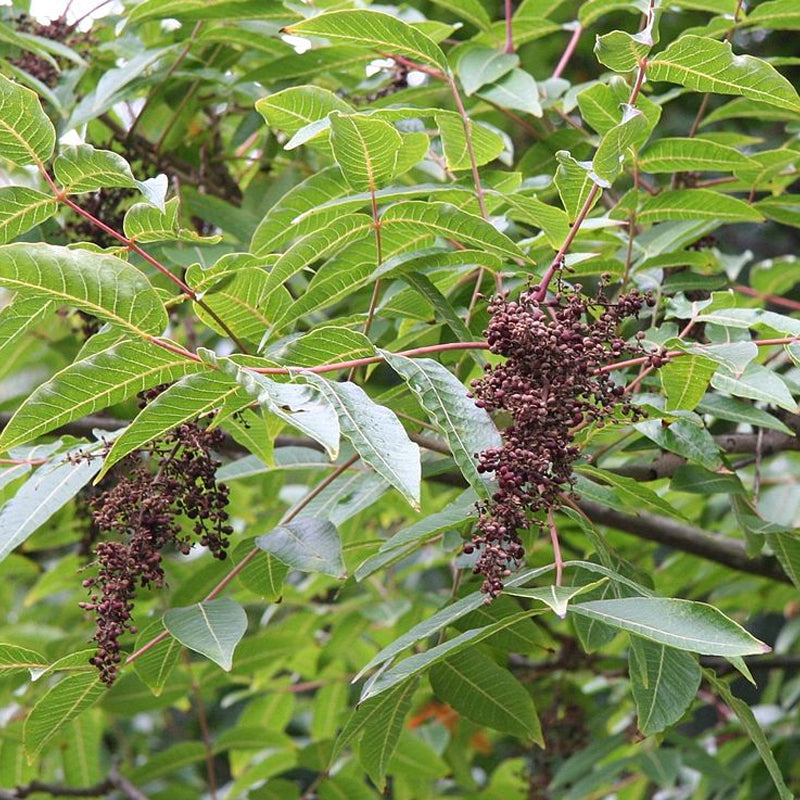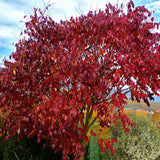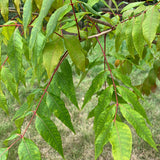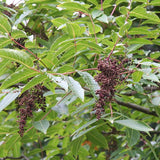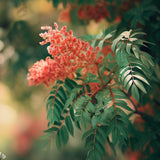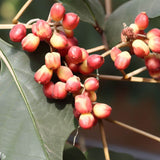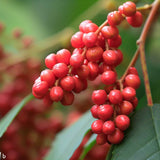Rhus potaninii (Chinese Sumac, Potanin Sumac)
Rhus potaninii (Chinese Sumac, Potanin Sumac) is a deciduous tree belonging to the Anacardiaceae family. Native to China, specifically the provinces of Gansu, Ningxia, Shaanxi, and Sichuan, it is named after the Russian explorer Grigory Potanin, who first collected specimens of the plant.
The Chinese Sumac tree typically reaches a height of 10 to 20 meters (33 to 66 feet) and forms a spreading canopy with a rounded or irregular crown. It has a moderate growth rate and develops a multi-stemmed or single-trunked structure. The bark of mature trees is grayish-brown and becomes rough and furrowed with age.
The leaves of Rhus potaninii are pinnately compound and alternate along the branches. Each leaf is composed of several leaflets, usually 9 to 15, which are elliptical in shape and serrated along the edges. The leaflets have a glossy, dark green color and turn brilliant shades of red, orange, and yellow in the fall, adding to the tree's ornamental value.
During late spring to early summer, Chinese Sumac produces small, inconspicuous greenish-yellow flowers in terminal clusters called panicles. The flowers are not particularly showy, but they give way to clusters of small, spherical drupes that mature in late summer or early autumn. These fruits are initially green and then transition to a vivid red color, creating an eye-catching display.
Rhus potaninii is valued for its attractive foliage, beautiful autumn coloration, and ornamental fruits. It is often planted as an ornamental tree in gardens, parks, and along streetscapes. The tree prefers well-drained soil and full sun to partial shade for optimal growth. It is relatively drought-tolerant and can withstand a range of soil conditions.
It's worth mentioning that while Rhus potaninii is a visually appealing tree, some species of the Rhus genus, including Chinese Sumac, contain sap and oils that can cause allergic reactions in some individuals. Contact with the sap or leaves may lead to skin irritation or rashes, so it's important to take precautions when handling or pruning the tree.
Overall, Rhus potaninii, or Chinese Sumac, is a striking deciduous tree known for its attractive foliage, vibrant autumn colors, and clusters of red fruits.
Botanical Name : Rhus potaninii
Common Name : Chinese Sumac, Potanin Sumac
Height : 40 ft
Spread : 25 ft
Germination Info : Seed requires a scarification prior to sowing
Hardiness zone : 5-7
Average seed per ounce : Approx. 2188



